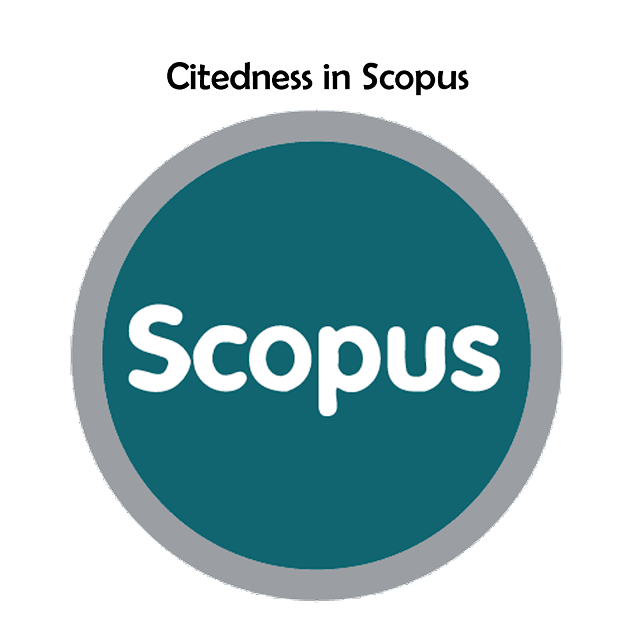PENERAPAN METODE COMPOSITE LOGIC UNTUK PERANCANGAN FRAMEWORK PENGUMPULAN BUKTI DIGITAL PADA MEDIA SOSIAL
Muhammad Naim Al Jumah(1*); Bambang Sugiantoro(2); Yudi Prayudi(3);
(1) Universitas Islam Indonesia
(2) Universitas Islam Sunan Kalijaga
(3) Universitas Islam Indonesia
(*) Corresponding Author
AbstractSocial media has become a major part of society. But most of the time social media is used as a way people commit the crime. Due to numerous crimes that use social media, it is essential to design a framework to gather digital evidence on social media. This study develops the design of Framework by implementing Composite Logic Model. A logic Composite model can be used to determine the role model of any variable or pattern that need to collaborate. Composite Logic Model will produce a role model that has a role to produce patterns so that it can produce the same goal. A method of Composite Logic will collaborate with the Digital Forensics Investigation framework to produce a Digital Evidence Collection Framework on Social Media. Based on data and facts, this study has been producing a new framework of gathering digital evidence on social media. The framework has four main stages in the process of collecting digital evidence on social media including pre-process, collection, analysis, and report. KeywordsFramework; Social Media; Digital Evidence; Composite Logic
|
Full Text:PDF |
Article MetricsAbstract view: 1325 timesPDF view: 918 times |
Digital Object Identifier https://doi.org/10.33096/ilkom.v11i2.442.135-142 https://doi.org/10.33096/ilkom.v11i2.442.135-142
|
Cite |
References
L. Sandor et al., “Social media in product development,” 2018 Syst. Inf. Eng. Des. Symp. SIEDS 2018, vol. 40, pp. 88–93, 2018.
H. Arshad, A. Jantan, and E. Omolara, “Evidence collection and forensics on social networks: Research challenges and directions,” Digit. Investig., vol. 28, pp. 126–138, 2019.
S. Stieglitz, M. Mirbabaie, B. Ross, and C. Neuberger, “Social media analytics – Challenges in topic discovery, data collection, and data preparation,” Int. J. Inf. Manage., vol. 39, no. October 2017, pp. 156–168, 2018.
S. L. Garfinkel, “Digital forensics research: The next 10 years,” Digit. Investig., vol. 7, no. SUPPL., 2010.
D. Quick and K. R. Choo, “Digital forensic intelligence : Data subsets and Open Source Intelligence ( DFINT + OSINT ): A timely and cohesive mix,” Futur. Gener. Comput. Syst., vol. 78, pp. 558–567, 2018.
M. Canbaz et al., “A Survey of Social Network Forensics,” J. Digit. Forensics, Secur. Law, no. May 2017, 2017.
B. Glavic, J. Siddique, P. Andritsos, and R. J. Miller, “Provenance for Data Mining,” Proc. 5th USENIX Conf. Theory Pract. Proven., p. 5, 2013.
N. Lizarti, B. Sugiantoro, and Y. Prayudi, “Penerapan Composite Logic Dalam Mengkolaborasikan Framework Terkait Multimedia Forensik,” JISKA (Jurnal Inform. Sunan Kalijaga), vol. 2, no. 1, p. 26, 2018.
D. Strüber, G. Taentzer, S. Jurack, and T. Schäfer, “Towards a distributed modeling process based on composite models,” Lect. Notes Comput. Sci. (including Subser. Lect. Notes Artif. Intell. Lect. Notes Bioinformatics), vol. 7793 LNCS, pp. 6–20, 2013.
M. Nuh Al-Azhar, “digital forensics,” p. 302, 2012.
K. Kent, S. Chevalier, T. Grance, and H. Dang, “Guide to integrating forensic techniques into incident response,” 2006.
M. R. Gregg Gunsch, Clint Carr, “An Examination of Digital Forensic Models,” 4th Int. Work. Syst. Approaches to Digit. Forensic Eng. SADFE 2009, vol. 1, no. 3, pp. 42–53, 2009.
P. F. Mccawley, “for Program Planning and Evaluation,” no. September, 2015.
M. Nardo, M. Saisana, A. Saltelli, and S. Tarantola, Handbook of Contructing Compsoite Indicators: Methodology and user guide. 2008.
S. V. Korolev and S. I. Kuchanov, “A Road Map for Digital Forensic Research,” Polym. Sci. U.S.S.R., vol. 24, no. 3, pp. 709–719, 1982.
R. Mislan, J. Goldman, S. Debrota, M. Rogers, and T. Wedge, “Computer Forensics Field Triage Process Model,” J. Digit. Forensics, Secur. Law, pp. 27–40, 2006.
S. Perumal, “Digital Forensic Model Based On Malaysian Investigation Process,” IJCSNS Int. J. Comput. Sci. Netw. Secur., vol. 9, no. 8, pp. 38–44, 2009.
M. E. Alex and R. Kishore, “Forensics framework for cloud computing,” Comput. Electr. Eng., vol. 60, pp. 193–205, 2017.
G. Horsman, “Framework for Reliable Experimental Design (FRED): A research framework to ensure the dependable interpretation of digital data for digital forensics,” Comput. Secur., vol. 73, pp. 294–306, 2018.
A. Case, A. K. Das, S. J. Park, J. (Ram) Ramanujam, and G. G. Richard, “Gaslight: A comprehensive fuzzing architecture for memory forensics frameworks,” Digit. Investig., vol. 22, pp. S86–S93, 2017.
R. Ruuhwan, I. Riadi, and Y. Prayudi, “Penerapan Integrated Digital Forensic Investigation Framework v2 (IDFIF) pada Proses Investigasi Smartphone,” J. Edukasi dan Penelit. Inform., vol. 2, no. 1, 2017.
Y. D. Rahayu and Y. Prayudi, “Membangun Integrated Digital Forensics Investigation Framework (Idfif) Menggunakan Metode Sequential Logic,” Semin. Nas. Teknol. Inf. dan Komun., no. March, pp. 2089–9813, 2014.
Refbacks
- There are currently no refbacks.
Copyright (c) 2019 Muhammad Naim Al Jumah, Bambang Sugiantoro, Yudi Prayudi

This work is licensed under a Creative Commons Attribution-ShareAlike 4.0 International License.







